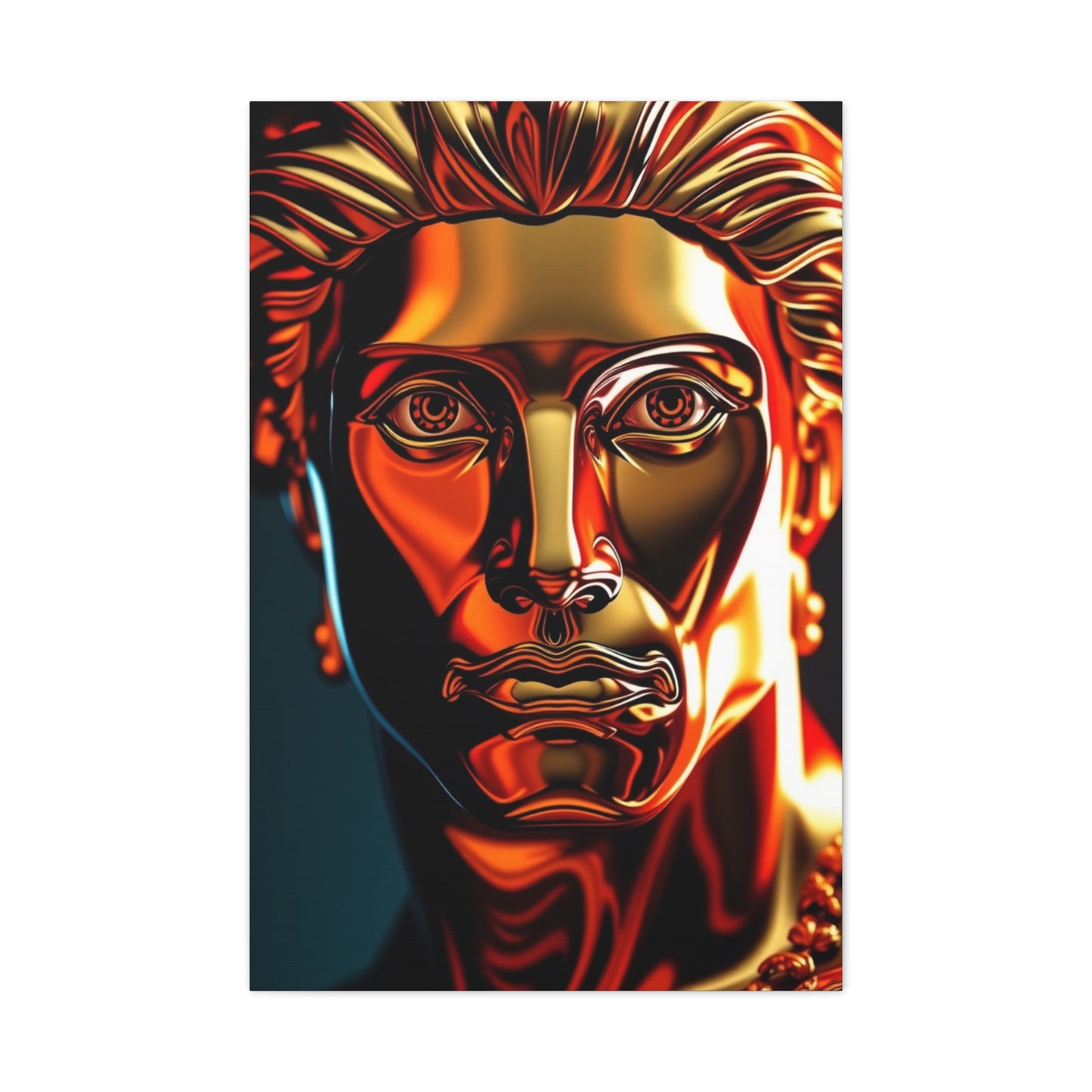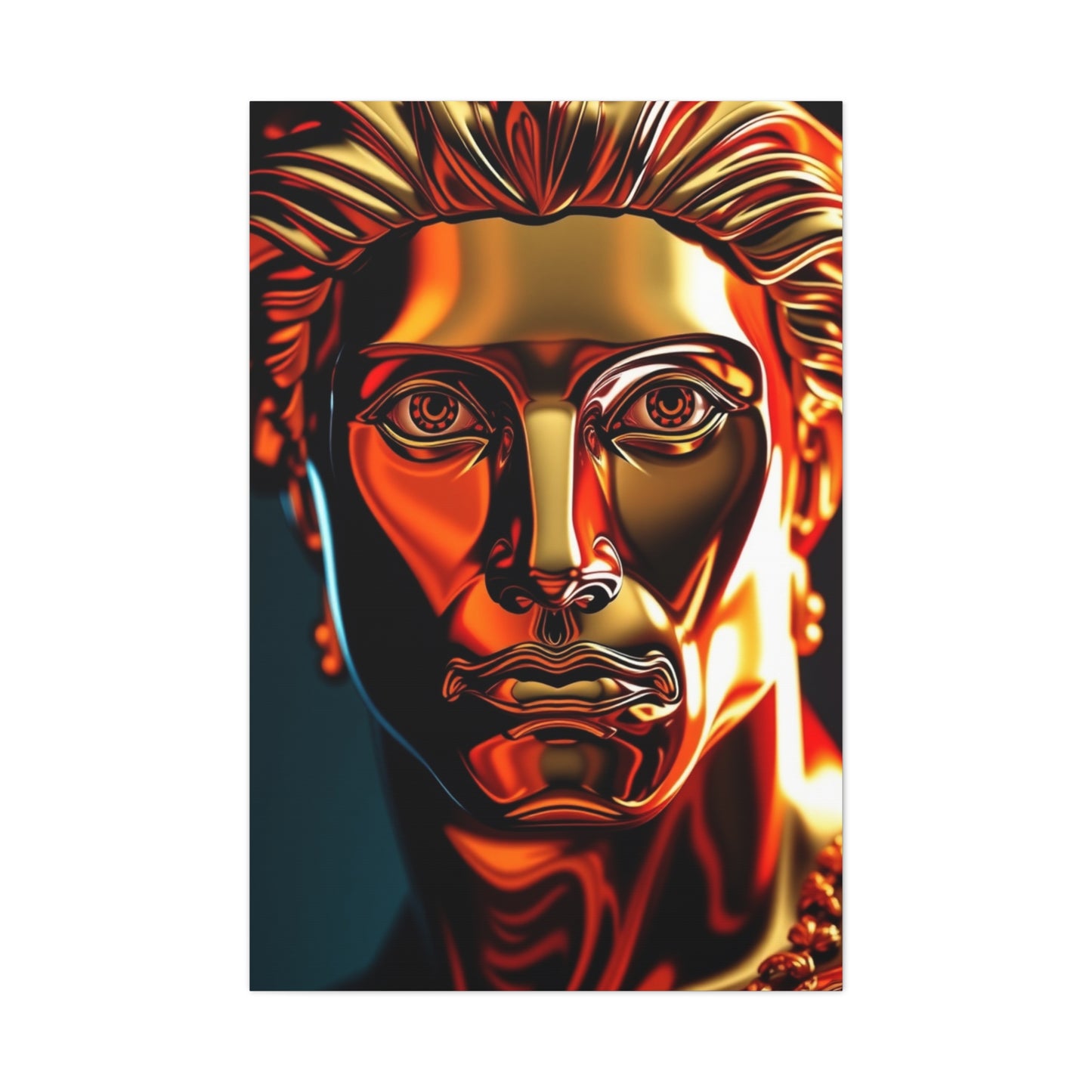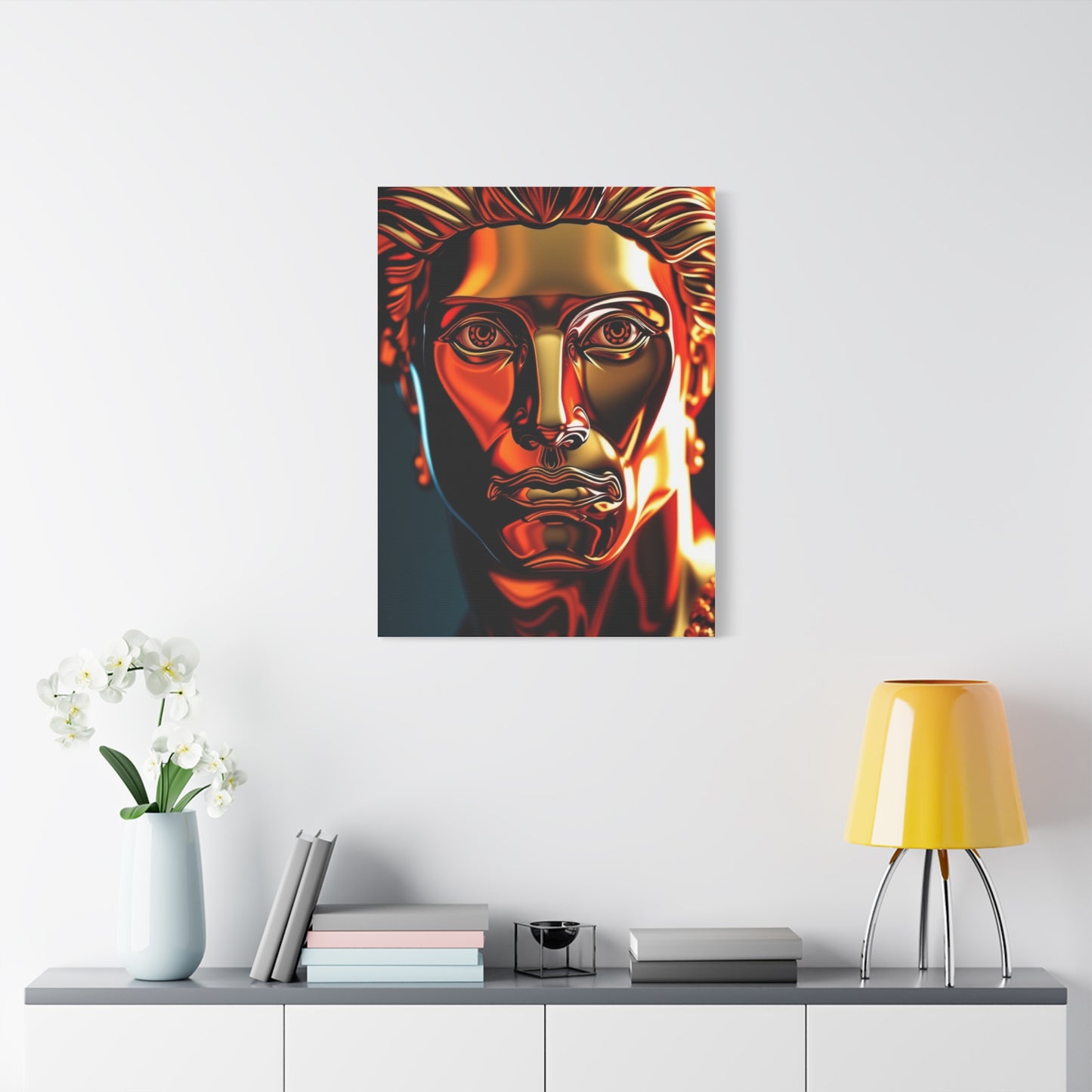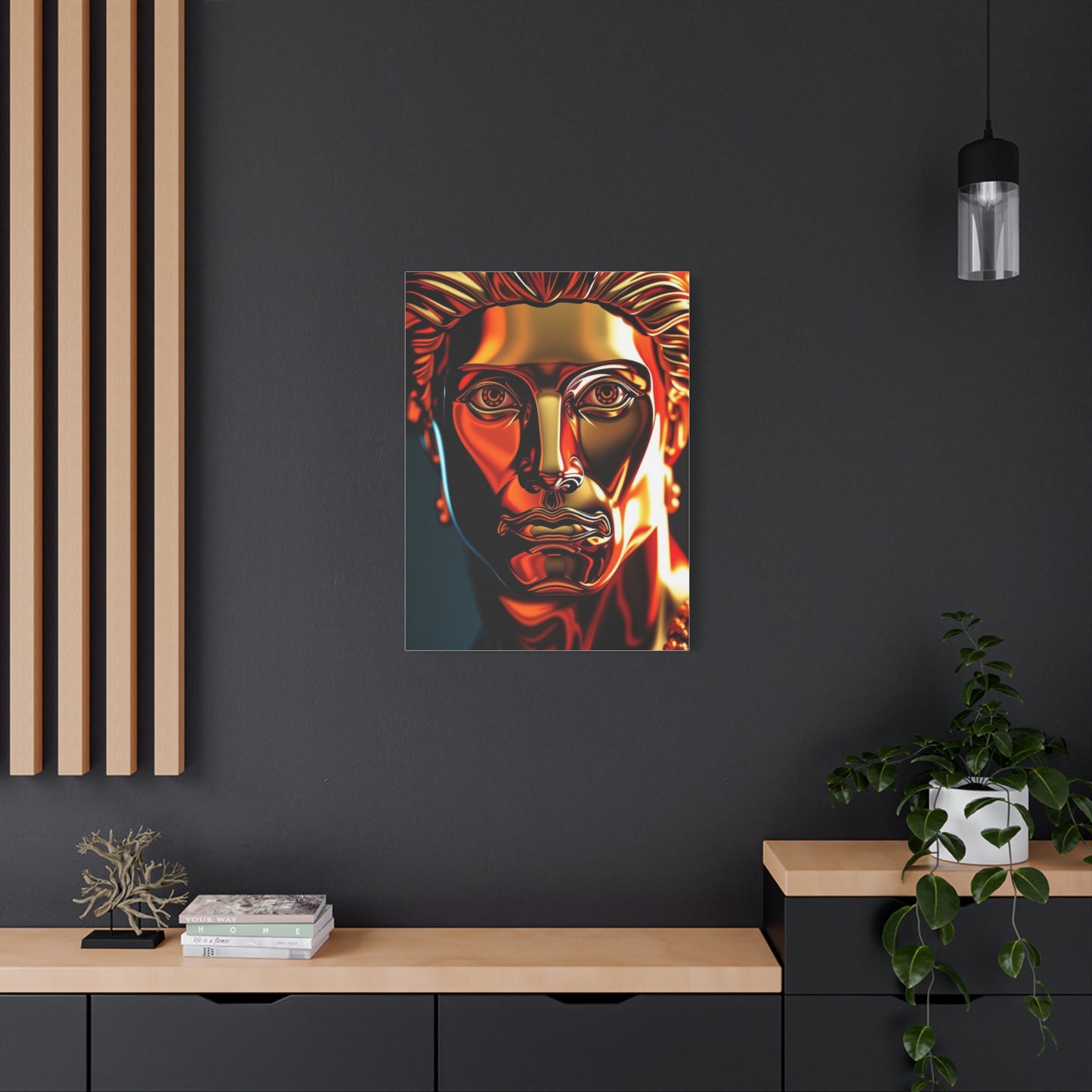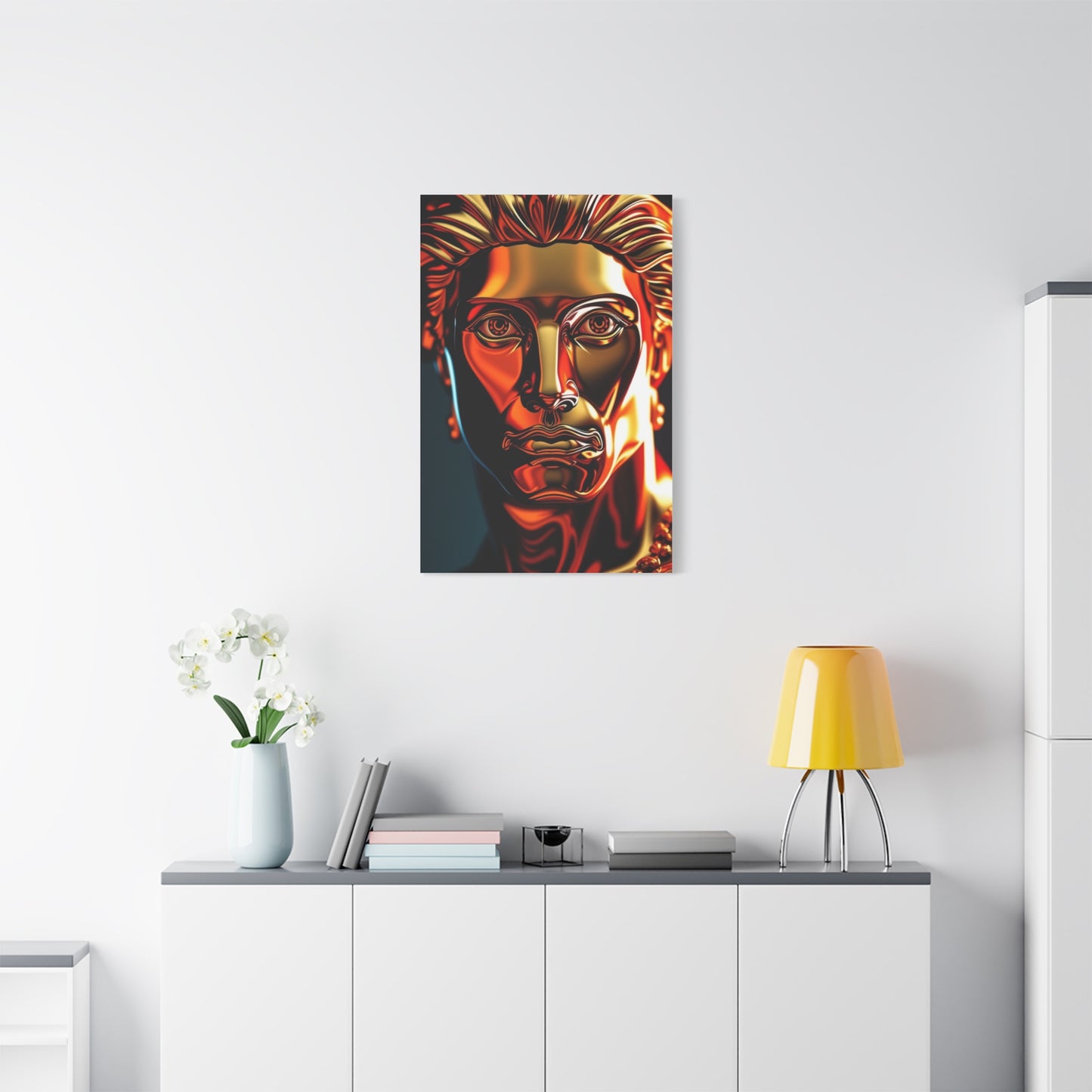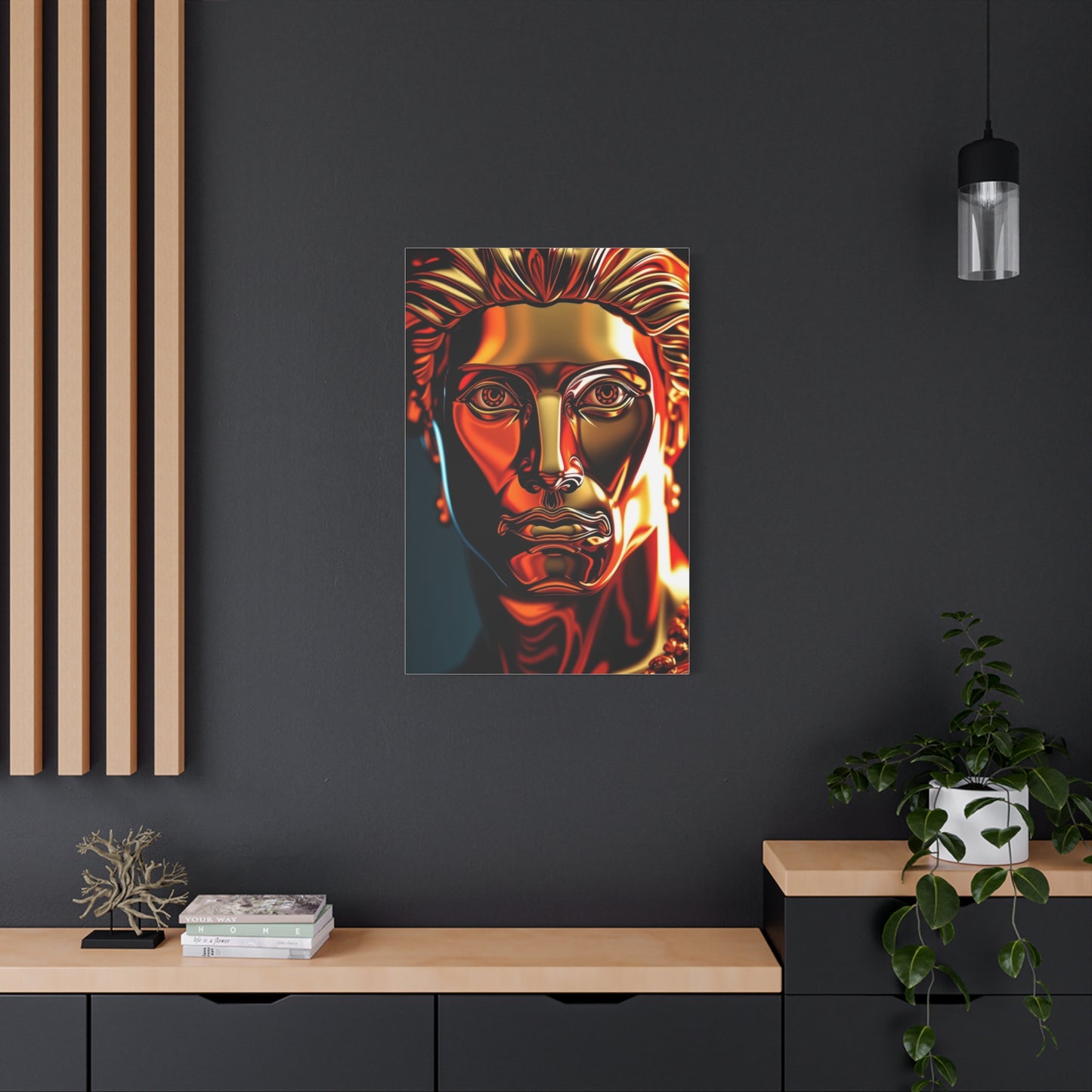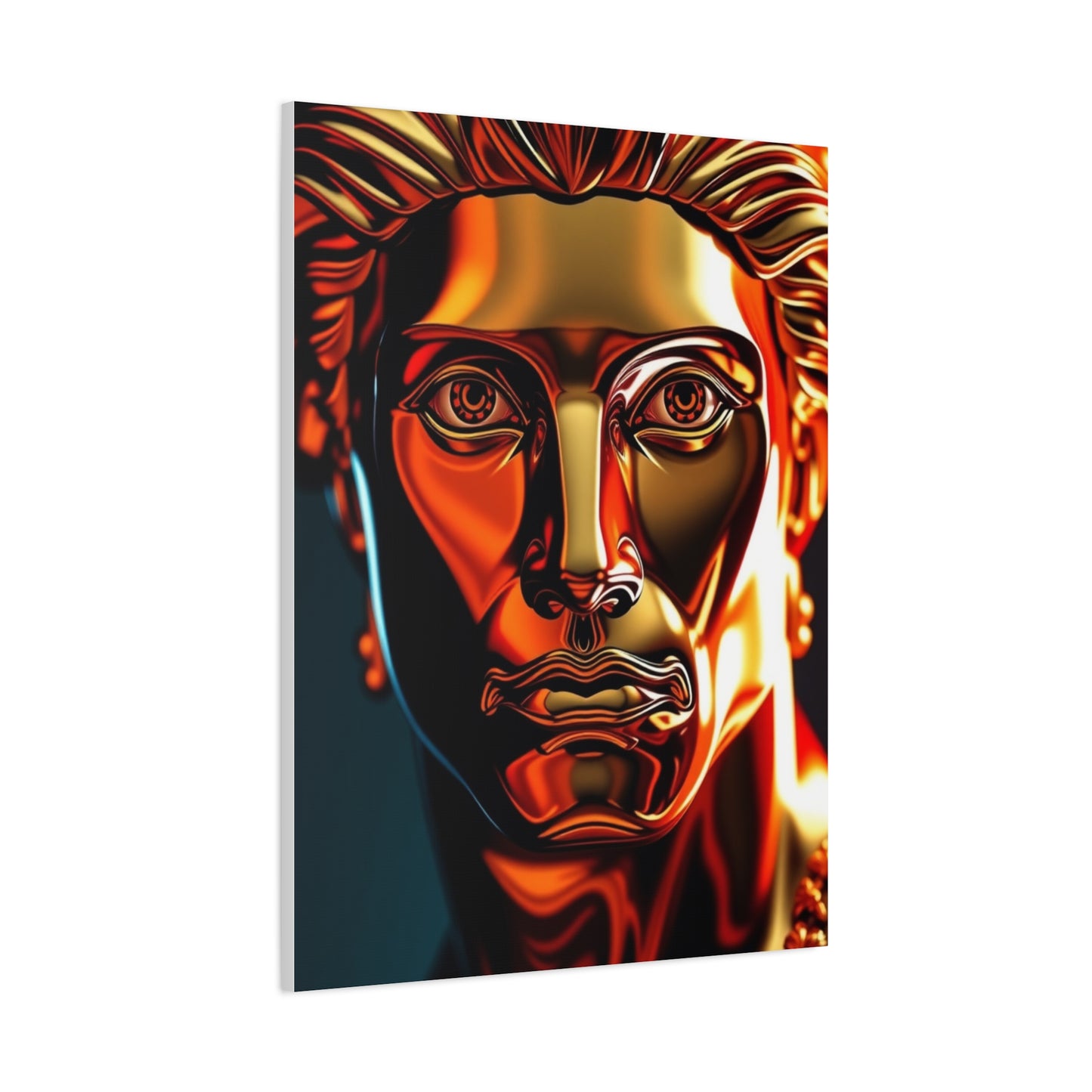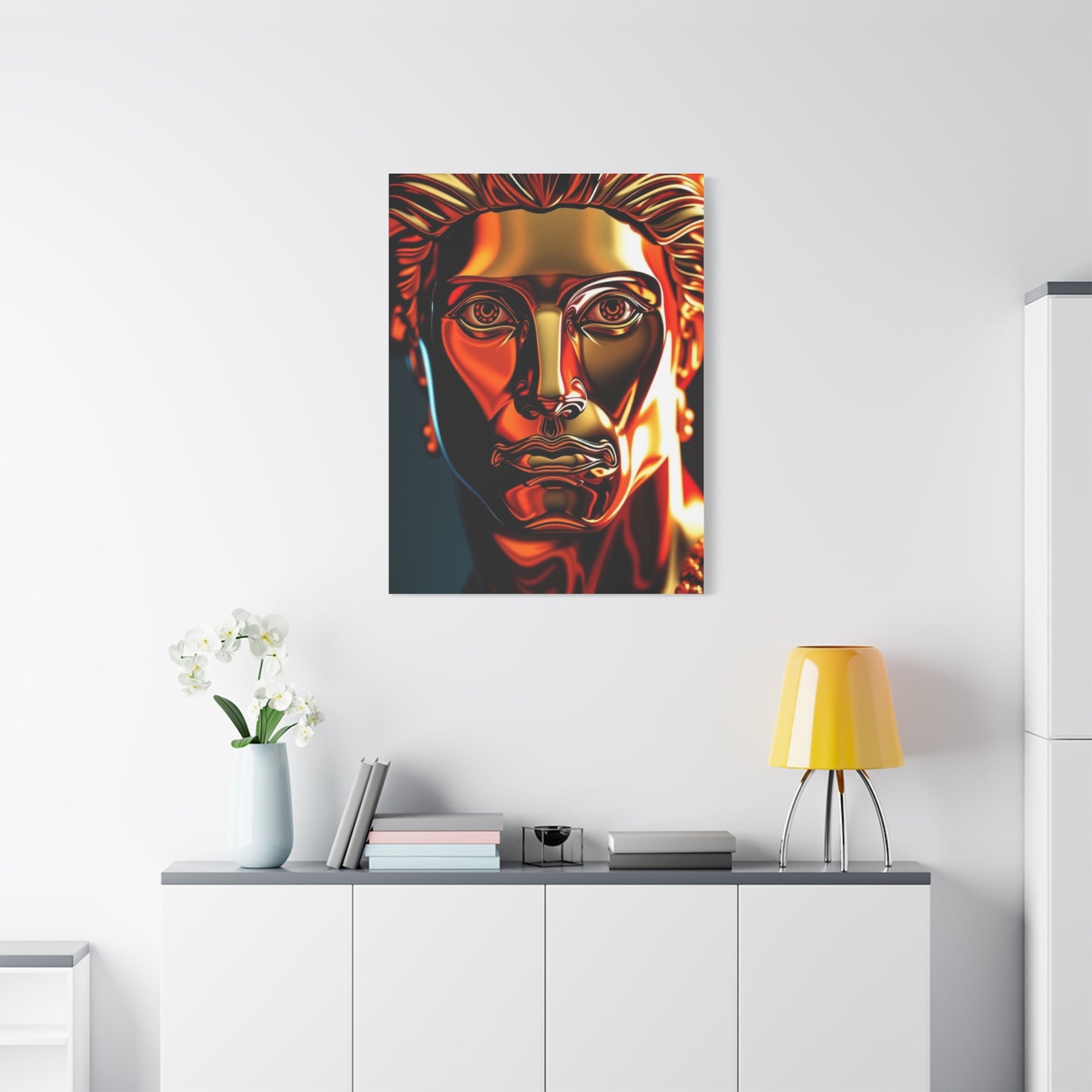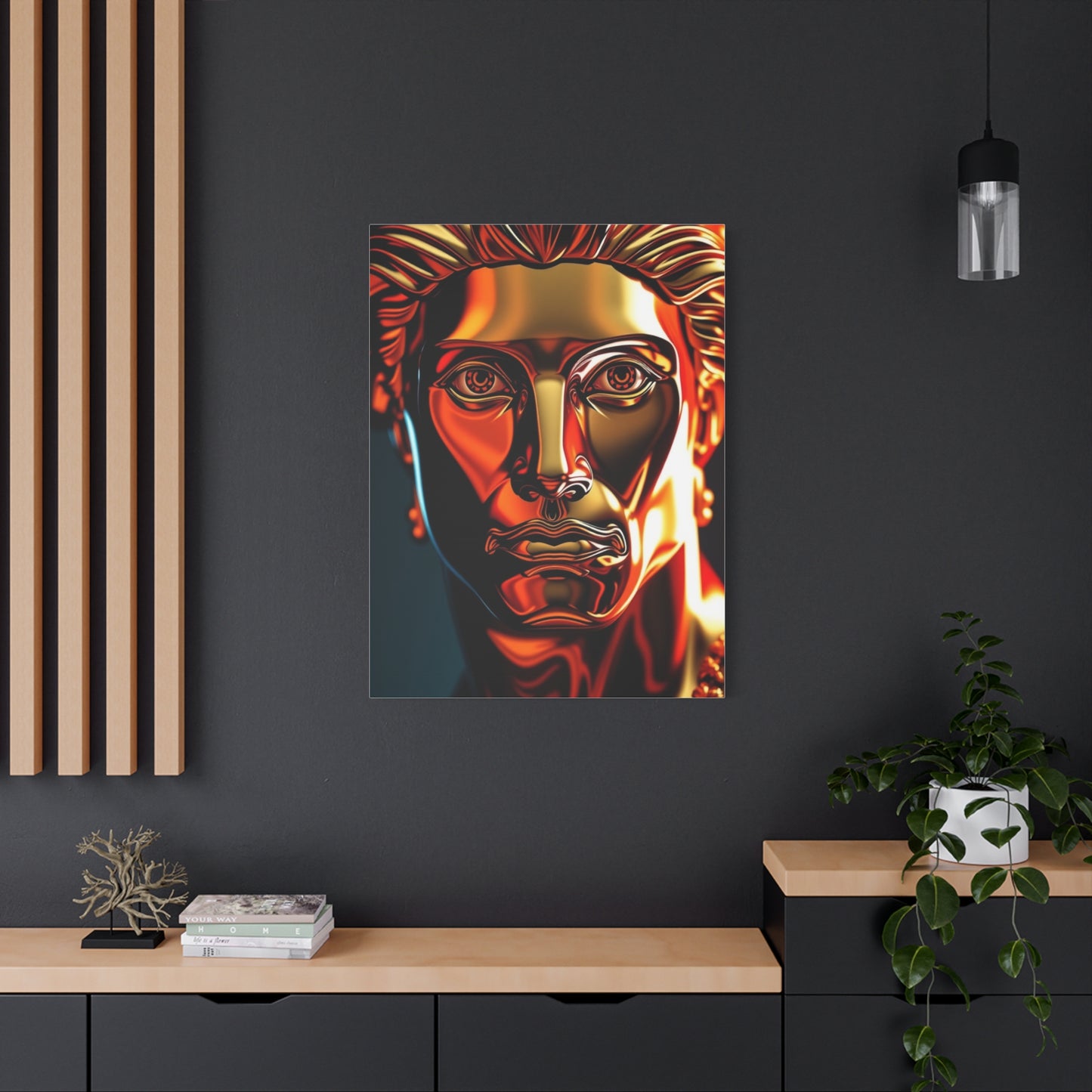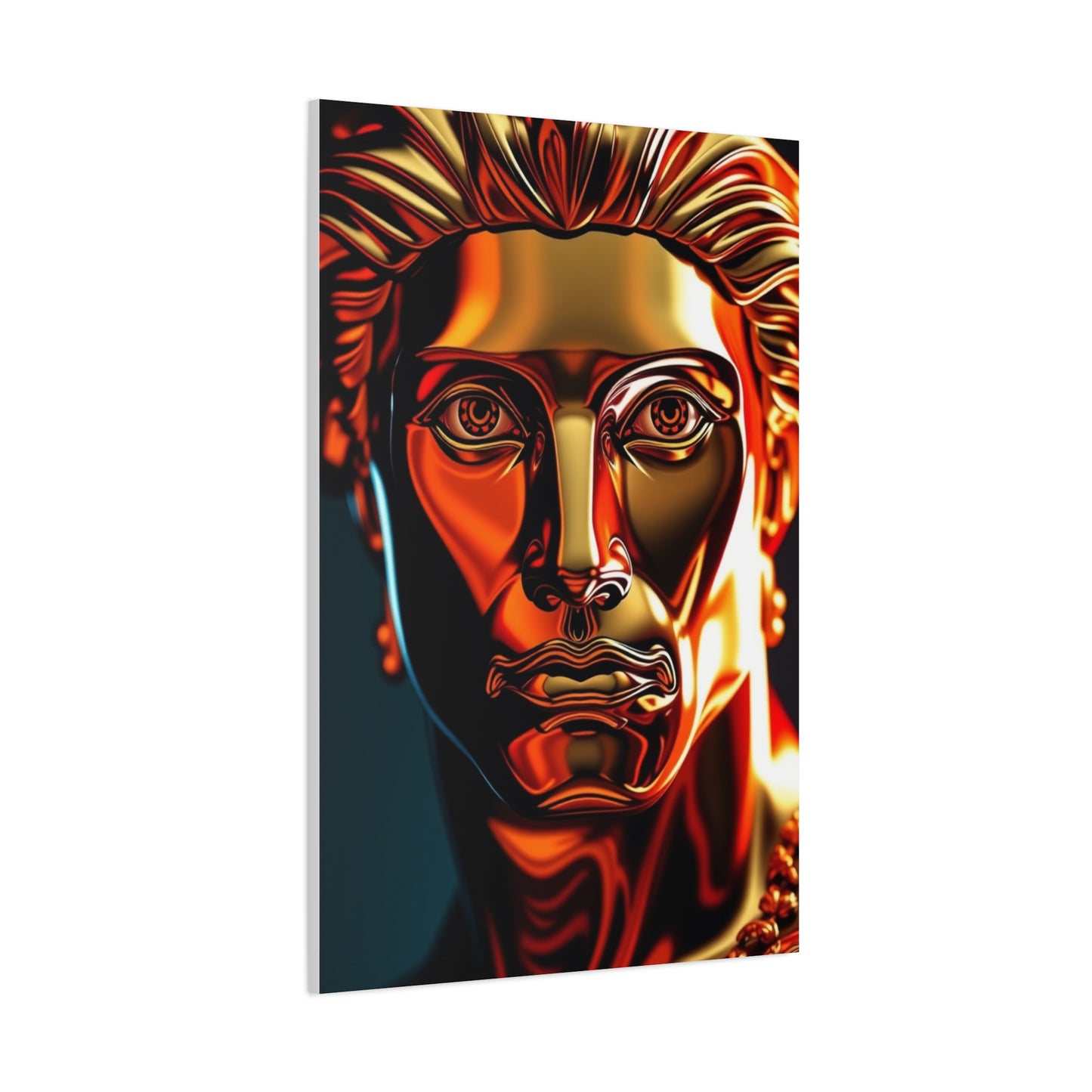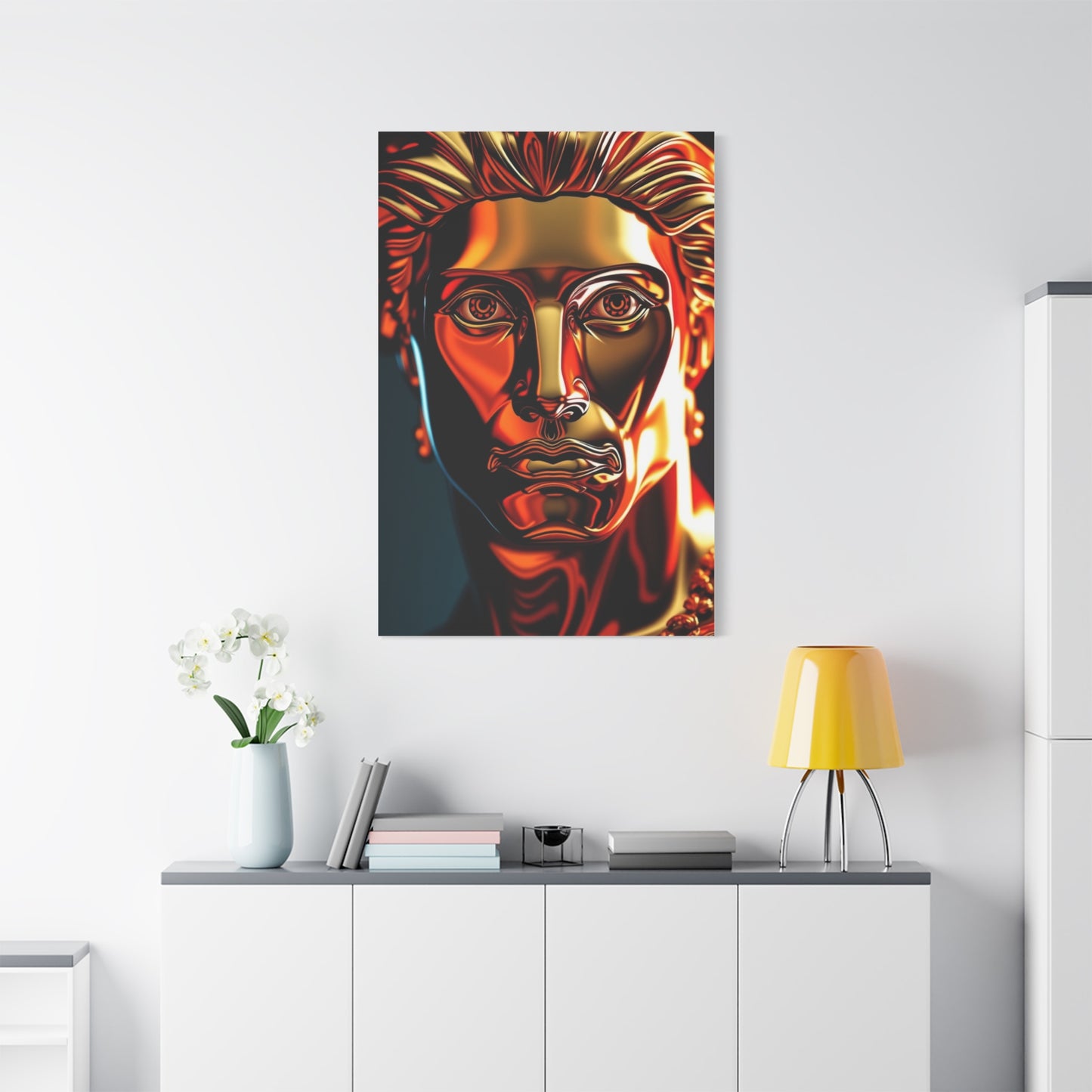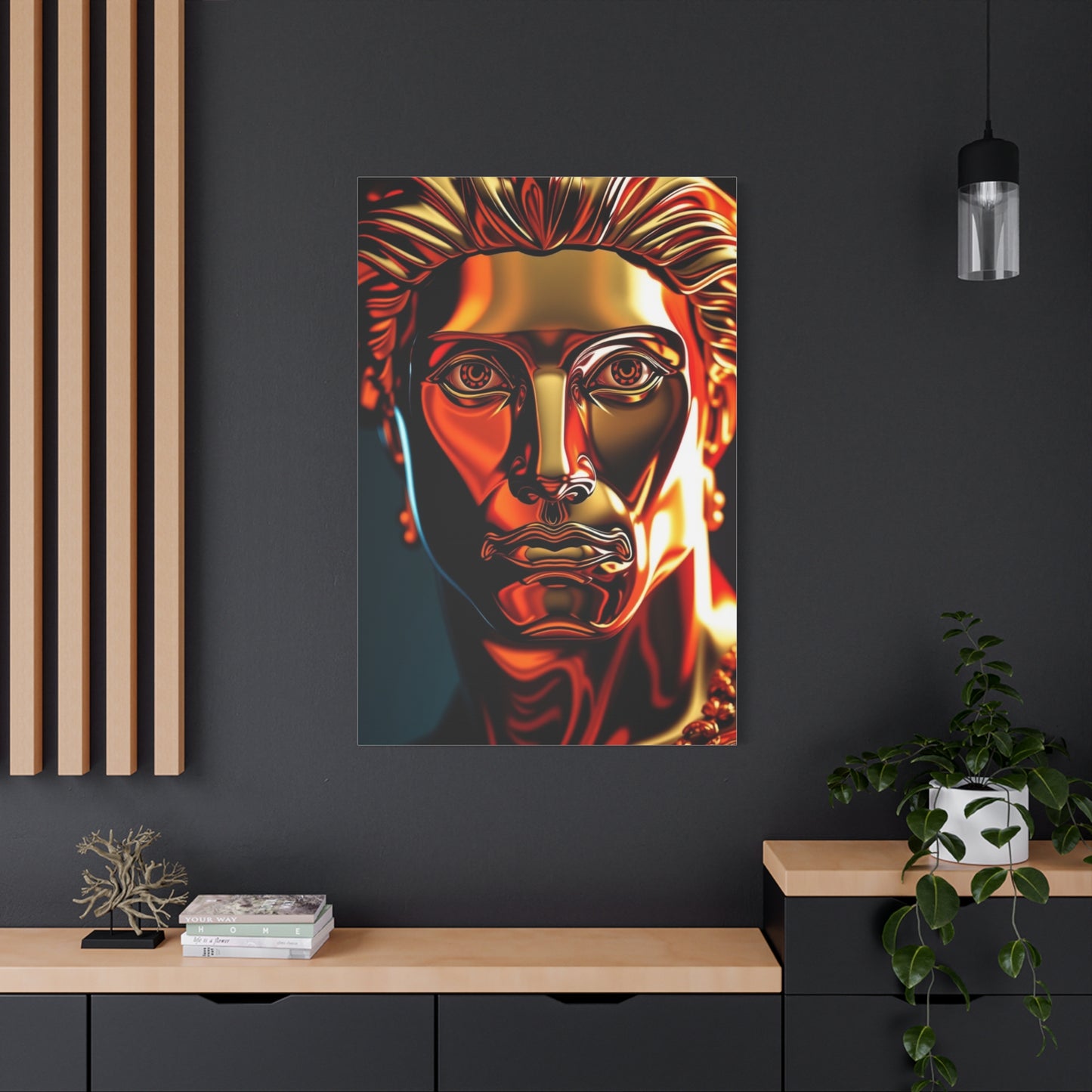A Touch of Majesty: Why Regal Virtuoso Wall Art Transforms Any Space into a Royal Retreat
The spectrum of regal virtuoso wall art encompasses an impressive diversity of styles, each offering distinct visual characteristics and emotional resonances. Traditional approaches emphasize ornate frames, gilded accents, and classical subject matter such as portraits, landscapes, and allegorical scenes rendered in rich, saturated colors. These pieces often feature meticulous attention to detail, with every element carefully composed to create a sense of harmonious balance and visual luxury. The materials used in traditional styles frequently include high-quality canvas, elaborate wooden frames with carved details, and metallic embellishments that catch and reflect light in captivating ways.
Contemporary interpretations of royal aesthetics take a different approach, often simplifying classical elements to create cleaner, more streamlined compositions that align with modern design preferences. These pieces might incorporate traditional motifs such as crowns, heraldic symbols, or architectural elements from historic palaces, but render them in minimalist styles using limited color palettes and geometric abstraction. This fusion of historical reference and contemporary execution appeals to those who appreciate the symbolism and prestige associated with royal aesthetics but prefer less ornate visual presentations in their living or working environments.
Abstract approaches to regal artistic expression represent another significant category, where artists evoke the feeling of luxury and sophistication through non-representational means. These works might employ rich textures, luxurious color combinations of gold, deep purple, royal blue, and crimson, or compositional strategies that create a sense of grandeur and importance without depicting recognizable imagery. The virtuoso quality in these pieces emerges through masterful handling of materials, innovative techniques, and the creation of visual experiences that command attention and provoke contemplation. Mixed-media approaches have also gained prominence, combining painting, printmaking, collage, and three-dimensional elements to create layered, complex works that reward extended viewing and offer new discoveries with each encounter.
Material Selection for Premium Artistic Creations
The foundation of any exceptional regal virtuoso wall art piece begins with careful selection of materials that ensure both visual impact and lasting durability. Canvas remains a popular choice for many traditional and contemporary works, with artists and manufacturers selecting from various weights and weaves to achieve desired textures and surface qualities. Museum-quality cotton or linen canvas provides an ideal substrate for paintings and prints, offering a stable surface that resists deterioration while displaying colors with clarity and vibrancy. The preparation of canvas surfaces through proper priming and treatment significantly affects the final appearance of the artwork, with various techniques producing effects ranging from smooth and refined to deliberately textured.
For works seeking to evoke particular aesthetic qualities, alternative substrates offer unique possibilities. High-grade wood panels provide a rigid, stable surface particularly suited to detailed work and techniques requiring precise control. Metal surfaces, including aluminum and copper, introduce reflective qualities and contemporary industrial aesthetics that can be particularly effective in modern interpretations of royal themes. Acrylic panels and glass create opportunities for dramatic visual effects through transparency, depth, and interaction with ambient lighting conditions. Each material choice carries implications not only for appearance but also for practical considerations such as weight, installation requirements, and maintenance needs.
The inks, paints, and finishes applied to these substrates must meet exacting standards to ensure color accuracy, longevity, and resistance to environmental factors such as light exposure and humidity fluctuations. Archival-quality inks used in professional giclée printing processes produce images with exceptional detail and color fidelity, with some manufacturers guaranteeing color stability for decades or even centuries when properly displayed and maintained. Oil and acrylic paints formulated with lightfast pigments ensure that original paintings retain their intended appearance over extended periods. Protective coatings and varnishes add additional layers of defense against environmental degradation while potentially enhancing visual characteristics through carefully controlled levels of gloss or matte finish.
Creating Cohesive Gallery Wall Compositions
The arrangement of multiple pieces of regal virtuoso wall art into unified gallery walls represents an advanced design strategy that, when executed successfully, creates visual impact exceeding the sum of individual artworks. Gallery wall compositions allow for creative expression through the juxtaposition of different sizes, styles, and subject matter, with the overall arrangement telling a more complex story than any single piece could communicate alone. The planning phase of gallery wall creation requires careful consideration of available wall space, the characteristics of individual artworks being incorporated, and the desired overall effect, whether formal and symmetrical or organic and asymmetric.
Grid arrangements, where pieces of uniform size are displayed in neat rows and columns with consistent spacing, create ordered, balanced compositions that project control and intentionality. This approach works particularly well in formal settings and with artwork that shares common characteristics such as matching frames or a unified color palette. The precision required for successful grid arrangements demands careful measurement and often benefits from the use of templates or digital planning tools that allow visualization before committing to nail holes. Asymmetric salon-style arrangements, inspired by the dense picture hanging traditions of historic art salons, embrace a more organic approach where pieces of varying sizes are combined in seemingly spontaneous but actually carefully orchestrated configurations.
Successful salon walls maintain visual balance despite their apparent randomness through careful attention to color distribution, compositional weight, and the creation of invisible alignment points that provide subtle structure. Beginning with a central anchor piece and building outward, designers can create dynamic arrangements that feel both curated and spontaneous. The spacing between pieces in gallery wall arrangements significantly affects overall appearance, with tighter spacing creating busier, more energetic effects and wider spacing allowing individual pieces more breathing room and visual independence. Professional designers often recommend spacing ranging from two to four inches between pieces, though specific circumstances may call for variations outside this range.
Lighting Strategies for Optimal Display
The transformative power of proper illumination cannot be overstated when considering the presentation of regal virtuoso wall art, as lighting fundamentally affects how colors appear, details resolve, and overall impact registers with viewers. Natural daylight provides ideal color rendering properties, allowing viewers to perceive artwork much as the artist intended, but comes with challenges including intensity variations throughout the day, potential for damaging ultraviolet exposure, and limited availability in many interior spaces. When natural light serves as the primary illumination source, positioning artwork perpendicular to windows rather than directly opposite helps minimize glare and reflection while maintaining good visibility.
Artificial lighting systems offer greater control and consistency, with several approaches available depending on specific needs and circumstances. Track lighting provides flexibility in directing light precisely where needed, with adjustable fixtures that can be repositioned as artwork arrangements change. For regal virtuoso wall art, warm color temperature bulbs typically prove most flattering, enhancing the rich golds, reds, and warm tones characteristic of many pieces in this style. Picture lights mounted directly above or below individual artworks create focused illumination that highlights specific pieces while adding dimensional drama through the interplay of light and shadow.
LED technology has revolutionized art lighting through improvements in color rendering, energy efficiency, and heat output reduction. Modern LED systems can achieve color rendering indices approaching natural daylight while generating minimal heat that might damage delicate artworks over extended periods. Dimmable systems allow adjustment of lighting intensity to match ambient conditions and desired mood, from bright illumination that facilitates detailed appreciation to subtler lighting that creates atmosphere. For particularly valuable or light-sensitive artworks, conservation-grade lighting systems incorporate UV filtering and precise control over exposure levels, extending the lifespan of colors and materials while maintaining optimal viewing conditions.
Room-Specific Placement Recommendations
The effective integration of regal virtuoso wall art into specific rooms requires understanding both the functional characteristics of different spaces and the psychological effects desired in each environment. Living rooms and formal sitting areas represent prime locations for significant artistic statements, as these spaces typically receive extended viewing time from both residents and guests. In these settings, artwork positioned above the main seating area creates a natural focal point that draws the eye and establishes the room's aesthetic character. The formality and sophistication inherent in royal-inspired art proves particularly appropriate in spaces designed for entertaining and social interaction.
Dining rooms benefit from artwork that enhances the experience of shared meals, with pieces positioned to be easily viewed from seated positions around the table. The colors and subjects chosen for dining room art can influence the atmosphere of meals, with warm, vibrant pieces energizing the space while cooler, more contemplative works create calm, reflective environments. The tradition of displaying significant artwork in dining rooms stretches back centuries, reflecting the importance of these spaces as centers of hospitality and family connection. In formal dining rooms, symmetrical arrangements of matching or coordinated pieces can reinforce the structured nature of the space.
Bedrooms call for artwork selections that promote the desired atmosphere, whether restful and calming or romantic and passionate. The wall opposite the bed provides prime positioning for a significant piece that becomes one of the first sights upon waking and the last before sleep. Personal taste plays an especially important role in bedroom art selection, as these private spaces need not conform to broader household aesthetic themes. Home offices and studies benefit from artwork that inspires productivity, creativity, or contemplation, depending on the work conducted in these spaces. The gravitas and cultural connections inherent in regal virtuoso wall art can be particularly appropriate in professional home environments where impressions matter and sophisticated atmosphere proves advantageous.
Maintenance and Preservation Strategies
Protecting the investment represented by quality regal virtuoso wall art requires ongoing attention to maintenance and preservation practices that prevent deterioration and ensure artworks retain their intended appearance for years or decades. Regular dusting represents the most fundamental maintenance task, with soft, clean microfiber cloths or professional art dusters gently removing accumulated particles without scratching surfaces or dislodging materials. For framed works under glass, appropriate glass cleaning products applied to lint-free cloths clean surfaces without streaking, though care must be taken to avoid allowing moisture to seep behind frames where it might damage artwork.
Environmental conditions play crucial roles in art preservation, with factors including temperature, humidity, light exposure, and air quality all potentially affecting artwork longevity. Stable temperature ranges between sixty-five and seventy-five degrees Fahrenheit minimize expansion and contraction of materials that can lead to cracking, warping, or separation of layers. Relative humidity maintained between forty and sixty percent prevents problems associated with both excessive moisture and excessive dryness, as fluctuations outside this range can cause mold growth, paper warping, or paint flaking. Climate control systems that maintain consistent conditions throughout the year provide ideal environments for valuable artworks.
Light exposure requires particular attention, as ultraviolet radiation and even visible light cause cumulative damage to many art materials, leading to fading colors, yellowing supports, and material degradation. Limiting direct sunlight exposure, using UV-filtering glazing materials, and moderating artificial light levels all contribute to extended artwork lifespans. For particularly valuable or sensitive pieces, periodic rotation from display to storage in dark, climate-controlled environments allows materials to rest from constant light exposure. Professional conservation assessment every few years helps identify developing problems before they become severe, with trained conservators offering guidance on maintenance needs and potential interventions to address condition issues.
Investment Value and Collectibility Factors
Understanding the factors that contribute to the value of regal virtuoso wall art assists collectors and decorators in making informed decisions about acquisitions and in developing collections that may appreciate over time. Artist reputation stands as perhaps the most significant determinant of artwork value, with pieces created by recognized, established artists commanding higher prices and generally maintaining or increasing value more reliably than works by unknown creators. The provenance of a piece, documenting its ownership history and exhibition record, adds to both monetary and cultural value, particularly when connections to significant collections or prestigious institutions can be established.
Edition size for prints and reproductions inversely relates to value, with limited editions and lower edition numbers generally proving more desirable to collectors than unlimited runs or high numbers within editions. Artist proofs and other special edition designations add collectibility through their relative scarcity and association with quality control processes. For original paintings and unique pieces, factors including size, condition, date of creation, and inclusion in the artist's recognized body of work all influence valuation. Documentation including certificates of authenticity, professional appraisals, and photographic records supports claims about artwork characteristics and origins.
Market trends in the art world affect values across categories, with certain styles, periods, or thematic approaches experiencing waves of increased attention and demand. While attempting to time art market movements proves as challenging as timing financial markets, awareness of broader trends provides context for purchase and sale decisions. The personal enjoyment derived from living with art should remain a primary consideration in acquisition decisions, as the intangible benefits of aesthetic pleasure and daily engagement with meaningful objects often outweigh purely financial considerations. Building relationships with reputable galleries, dealers, and artists provides access to quality works and expert guidance while supporting the continued creation of new art.
Cultural Significance and Symbolism
The enduring appeal of regal virtuoso wall art stems in part from its rich symbolic content and connections to cultural narratives about power, beauty, achievement, and transcendence. Royal imagery historically communicated messages about divine right, hereditary privilege, and the maintenance of social hierarchies, with elaborate artworks serving as visual manifestations of authority and legitimacy. In contemporary contexts, these historical associations transform into more personal and metaphorical meanings, with royal aesthetics expressing individual aspirations, appreciation for beauty and craftsmanship, or connection to cultural heritage.
Crown motifs appearing frequently in this artistic genre carry multivalent symbolism beyond their literal association with monarchy, representing achievement, authority, self-actualization, and the recognition of inherent worth. In personal spaces, crown imagery can serve as daily reminder of one's value and potential, a visual affirmation of self-worth and capability. Heraldic elements including shields, crests, and banners evoke themes of family heritage, personal identity, and the values one chooses to defend and promote. The incorporation of these symbols into contemporary artwork allows individuals to craft personal mythologies and visual representations of their values and aspirations.
Architectural elements from palaces and grand estates, including ornate moldings, dramatic staircases, and elaborate doorways, symbolize thresholds, transitions, and the passage between different states of being or levels of consciousness. Landscapes and gardens frequently depicted in royal settings represent idealized nature tamed and ordered according to human vision, suggesting humanity's creative capacity and ability to shape environments according to aesthetic and philosophical principles. Understanding these symbolic dimensions enriches the experience of selecting and living with regal virtuoso wall art, transforming decorative objects into vehicles for meaning-making and self-expression.
Pairing Art with Interior Design Styles
Successfully integrating regal virtuoso wall art into existing interior design schemes requires understanding how different aesthetic approaches interact and complement one another. Traditional interiors characterized by classic furniture styles, rich fabrics, and formal arrangements provide natural contexts for ornate, historically-inspired artwork that reinforces the overall design direction. In these settings, artwork and décor speak a common visual language, with recurring motifs, compatible color palettes, and shared emphasis on craftsmanship and material quality creating cohesive, harmonious environments.
Transitional spaces that bridge traditional and contemporary aesthetics offer opportunities for artwork that similarly synthesizes classical and modern elements. Simplified interpretations of royal motifs rendered in contemporary color palettes or formats can serve as perfect mediating elements, honoring traditional associations while maintaining connection to modern sensibilities. The key in transitional settings lies in identifying shared characteristics such as color temperatures, levels of ornamentation, or material qualities that create bridges between different stylistic elements.
Even in decidedly modern or minimalist interiors, carefully selected regal virtuoso wall art can function effectively as deliberate contrast that adds visual interest and prevents spaces from becoming sterile or impersonal. In these applications, the artwork often operates as a carefully controlled injection of warmth, history, and complexity into otherwise spare environments. The juxtaposition of ornate historical references against clean-lined contemporary furnishings creates dynamic tension that enlivens spaces and rewards attention. Successfully executing this high-contrast approach requires confident design vision and willingness to embrace unexpected combinations that challenge conventional matching principles.
Custom Commission Possibilities
For those seeking truly unique regal virtuoso wall art perfectly tailored to specific spaces and preferences, custom commissions offer opportunities to collaborate directly with artists in creating one-of-a-kind pieces. The commission process typically begins with consultation discussions where clients articulate their vision, preferences, spatial requirements, and budget parameters while artists provide guidance on feasibility, timeline, and creative approaches. This collaborative dialogue forms the foundation for successful projects, establishing shared understanding and mutual expectations.
Artists may provide preliminary sketches, digital mockups, or small-scale studies allowing clients to preview proposed directions before committing to full production. This iterative process ensures the final piece aligns with client expectations while allowing artistic vision to guide specific execution choices. The timeline for custom commissions varies widely depending on piece complexity, artist availability, and production methods, with projects ranging from a few weeks for relatively straightforward pieces to several months or even years for elaborate, large-scale works.
Budget considerations for custom commissions encompass not only artist fees but also materials costs, framing expenses, and potential shipping and installation charges. While custom pieces generally cost more than comparable ready-made works, the premium purchases uniqueness, perfect fit to intended space, and the intangible satisfaction of owning artwork created specifically for and often in collaboration with the owner. Many artists offer different price tiers based on size, complexity, and their own career stage, making custom commissions accessible across various budget levels. The relationship developed with an artist through the commission process often proves as valuable as the finished artwork itself, providing insight into creative processes and establishing connections that may lead to future collaborations.
Seasonal Rotation and Display Strategies
Strategic rotation of regal virtuoso wall art throughout the year introduces variety to interior environments while allowing extended collections to receive display time and preventing viewer fatigue from overly static arrangements. Seasonal rotation strategies might emphasize different color palettes aligned with changing seasons, with warm golds and reds dominating autumn and winter displays while cooler blues and silvers feature prominently in spring and summer arrangements. Thematic content can also guide rotational strategies, with certain subjects or motifs feeling particularly appropriate to specific times of year.
Storage solutions for artwork not currently displayed must protect pieces from environmental damage while keeping them accessible for rotation schedules. Proper storage involves wrapping artwork in acid-free materials, protecting frames and surfaces from scratches or impacts, and maintaining appropriate environmental conditions regarding temperature, humidity, and light exposure. Purpose-built art storage racks or specialized storage facilities may be necessary for substantial collections or particularly valuable pieces requiring museum-level preservation standards.
The act of changing displayed artwork provides opportunities to reassess arrangements, refresh color schemes, and experiment with new combinations and hanging strategies. This process of periodic reinvention prevents spaces from becoming stale or overly familiar while maximizing the utility derived from collection investments. Documentation of different arrangements through photography creates reference libraries useful for recreating successful configurations and tracking the evolution of collection displays over time. For collectors who find storage and rotation logistics overwhelming, professional art consultation services can manage these processes, ensuring artwork receives appropriate care while spaces maintain fresh, dynamic appearances.
Mixing Royal Art with Contemporary Elements
Creating successful eclectic interiors that combine regal virtuoso wall art with contemporary furnishings and décor elements requires understanding principles of contrast, balance, and visual dialogue between different stylistic components. Rather than attempting to perfectly match every element, effective eclectic design strategically deploys differences to create interest while maintaining enough commonality to prevent spaces from appearing chaotic or confused. Shared color notes can tie together disparate stylistic elements, with a contemporary abstract piece incorporating royal purple echoing the deeper purple tones in traditional representational artwork elsewhere in the space.
Scale relationships offer another tool for creating cohesion across stylistic boundaries, with similarly sized pieces feeling naturally related even when their aesthetic approaches differ dramatically. Material connections also build bridges between different design vocabularies, as the presence of metallic elements in both traditional frames and contemporary furnishings establishes visual conversations across stylistic divides. The key lies in creating intentional relationships rather than random collections, with each element selected and positioned to contribute to an overall vision rather than simply filling available space.
Confidence proves essential when mixing dramatically different styles, as tentative or apologetic combinations rarely succeed. Committed, bold juxtapositions that embrace rather than minimize differences create the dynamic tension from which eclectic success emerges. This approach requires trusting personal taste and vision even when departing from conventional design wisdom, while remaining open to adjustments when combinations prove less successful than anticipated. Professional design assistance can be particularly valuable when attempting ambitious stylistic mixing, providing experienced eyes to identify promising combinations and warning against likely failures.
Global Markets and Acquisition Channels
Navigating the contemporary art market for regal virtuoso wall art requires understanding the various channels through which quality pieces become available and the relative advantages and disadvantages of different acquisition paths. Traditional brick-and-mortar galleries maintain important roles in the art ecosystem, providing curated selections, expert guidance, and opportunities for direct inspection before purchase. Gallery relationships with artists often ensure access to the latest work and potential advance notice of particularly desirable pieces. The overhead costs associated with physical gallery spaces typically result in higher retail prices compared to other channels, though the value-added services and acquisition experience may justify premiums for many buyers.
Online marketplaces have dramatically expanded access to global inventories, with specialized art platforms connecting buyers directly with artists and galleries worldwide. These digital channels offer advantages in selection breadth, price transparency, and purchasing convenience, though they introduce challenges regarding artwork authentication, quality assessment from photographs, and recourse when pieces fail to meet expectations. Reputable online platforms implement verification processes, provide detailed condition reports, and offer return policies that mitigate these concerns, though due diligence remains important when making significant investments through digital channels.
Art fairs and exhibitions provide concentrated opportunities to view extensive selections from multiple artists and galleries in limited timeframes, often with access to artists themselves for discussions about their work and creative processes. These events range from local community art shows to prestigious international fairs attracting collectors and institutions from around the world. Auction houses offer another acquisition channel, particularly for secondary market purchases of established artists' works or estate pieces. While auctions can yield favorable prices when competition remains limited, popular pieces can command premiums exceeding gallery retail when multiple determined bidders compete. Understanding auction processes, including buyer's premiums and bidding strategies, helps participants navigate these specialized marketplaces effectively.
Installation Techniques and Hardware Selection
Proper installation of regal virtuoso wall art ensures both safety and optimal presentation, with appropriate techniques and hardware varying based on artwork characteristics and wall construction. For standard framed pieces of moderate weight on drywall, picture hanging hooks rated for appropriate weight capacities provide simple, reliable solutions. These hooks drive into walls at angles that distribute weight across wall structure rather than relying solely on the holding power of the fastener itself. For heavier pieces exceeding twenty or thirty pounds, locating and anchoring into wall studs provides significantly greater weight capacity and security.
When stud locations don't align with desired artwork positions, specialized wall anchors designed for hollow walls expand behind drywall surfaces to create secure attachment points. Various anchor types including toggle bolts, molly bolts, and threaded wall anchors offer different weight capacities and installation characteristics, with proper selection based on specific load requirements and wall thickness. For masonry walls including brick, concrete, or stone, masonry anchors and screws provide necessary holding power, though installation requires appropriate drill bits and potentially hammer drilling capability.
Professional installation services prove advisable for particularly heavy, valuable, or difficult-to-position artworks, with experienced installers possessing specialized tools, knowledge of proper techniques, and insurance coverage should damages occur. For gallery wall arrangements involving multiple pieces, template systems using paper patterns cut to match frame dimensions allow complete layout planning before driving any fasteners, ensuring proper spacing and alignment while minimizing unnecessary holes. Leveling tools ranging from simple bubble levels to laser leveling systems ensure proper alignment, as even slight deviations from horizontal or vertical become glaringly obvious in installed artwork. Security considerations may warrant additional measures for valuable pieces, including anchoring systems that prevent artwork removal without tools or integration with building security systems.
Trends and Future Directions
The evolving landscape of regal virtuoso wall art reflects broader cultural movements, technological developments, and shifting aesthetic preferences that suggest trajectories for future development. Increasing environmental consciousness drives demand for sustainably produced artwork utilizing eco-friendly materials, non-toxic processes, and responsible sourcing of components. Artists and manufacturers responding to these concerns experiment with recycled substrates, plant-based inks and dyes, and production methods minimizing waste and energy consumption. This sustainability focus need not compromise aesthetic quality or artistic vision but rather introduces additional considerations into creative and manufacturing decisions.
Personalization trends extend into art markets, with consumers increasingly seeking pieces that reflect individual identities and stories rather than generic decorative solutions. Technologies enabling cost-effective custom production including digital printing and computer-aided design make personalized artwork increasingly accessible across price points. This democratization of customization allows broader audiences to participate in creating living environments that genuinely reflect their unique perspectives and values.
The integration of interactive and dynamic elements represents another emerging direction, with artwork incorporating motion sensors, programmable lighting, or digital display technologies that change appearance in response to environmental conditions or user preferences. These hybrid physical-digital pieces challenge traditional definitions of art while offering experiential possibilities unavailable through static media. Augmented reality applications that overlay digital elements onto physical artworks when viewed through smartphones or specialized glasses suggest future directions where the boundaries between physical objects and digital experiences become increasingly fluid.
The continued globalization of art markets facilitates cross-cultural pollination, with artists drawing inspiration from diverse traditions and creating works that synthesize royal aesthetics from multiple cultural contexts. This cosmopolitan approach produces pieces that speak to increasingly diverse audiences while honoring specific cultural heritages. As artificial intelligence tools become more sophisticated, their role in artistic creation will likely expand, raising philosophical questions about authorship, creativity, and the nature of artistic value while offering new capabilities for generating complex, detailed imagery aligned with classical aesthetic principles.
Creating Harmonious Color Schemes Around Artwork
Building effective room color schemes around regal virtuoso wall art requires understanding relationships between artwork colors and surrounding environmental hues, with several strategic approaches yielding different aesthetic effects. Complementary color schemes that incorporate hues opposite artwork's dominant colors on the color wheel create vibrant, energetic environments through maximum color contrast. This approach suits spaces intended for social activity and stimulation, though requires careful balance to prevent overwhelming effects or visual chaos.
Analogous color schemes using hues adjacent to artwork's primary colors on the color wheel produce harmonious, cohesive environments with natural flow and visual unity. This strategy proves particularly effective in spaces designed for relaxation and contemplation, where jarring contrasts might prove distracting or agitating. The limited color range in analogous schemes creates sophisticated, curated appearances that feel intentional and refined. Monochromatic approaches that explore various tints, tones, and shades of a single hue appearing prominently in artwork generate serene, elegant environments with subtle variations providing interest without dramatic contrast.
Neutral environments with walls, flooring, and major furnishings in whites, grays, beiges, or blacks allow colorful artwork to dominate as the primary source of chromatic interest. This approach maximizes artwork impact while providing flexibility to change pieces without requiring corresponding environmental color adjustments. Accent colors drawn directly from artwork and deployed selectively in accessories, textiles, or smaller furnishings create connections between art and environment while maintaining overall visual clarity. Testing paint samples in actual lighting conditions where artwork will be displayed proves essential, as colors appear dramatically different under varying light qualities and intensities.
The Role of Texture in Visual Interest
Beyond color and composition, texture plays crucial roles in the effectiveness of regal virtuoso wall art, adding dimensional interest and tactile qualities that engage viewers on multiple sensory levels. Traditional oil paintings create natural texture through the physical buildup of paint layers, with brush strokes, palette knife work, and impasto techniques producing varied surface qualities that catch light and cast subtle shadows. These textural variations reward close inspection while contributing to the overall visual impact perceivable from greater distances. The interplay between smooth and textured areas within a single piece creates internal contrasts that add complexity and visual excitement.
Contemporary production methods can simulate traditional paint textures through various techniques including gel printing overlays, embossing processes, and textured coating applications that add dimensional interest to otherwise flat surfaces. While these manufactured textures differ from those created through traditional painting processes, they effectively enhance visual appeal and create more engaging viewing experiences. Three-dimensional elements including applied materials, relief surfaces, and mixed-media components push texture into the realm of shallow sculpture, creating artworks that exist in the liminal space between two-dimensional images and fully three-dimensional objects.
The textures of frames, mounting surfaces, and surrounding wall treatments also contribute to overall aesthetic effects, with rough, organic textures creating different impressions than smooth, polished finishes. Thoughtful coordination of textural elements throughout a space enhances visual richness and prevents environments from feeling flat or one-dimensional. Textural contrast serves as an alternative or complement to color contrast, with smooth artwork displayed against textured walls or vice versa creating visual interest through surface quality variations rather than chromatic differences.
Understanding Print Types and Production Quality
The technical aspects of print production significantly affect the quality, longevity, and value of regal virtuoso wall art, with various printing technologies and material combinations yielding different characteristics and performance levels. Giclée printing, utilizing professional-grade inkjet technology with archival inks and fine art papers or canvas, represents the current standard for high-quality art reproduction. The term giclée derives from French and originally served to distinguish fine art prints from commercial reproductions, though the term's meaning has broadened as the technology has become more accessible. True giclée prints exhibit exceptional detail resolution, smooth color gradations, and excellent longevity when properly produced and displayed.
Offset lithography, a traditional printing method still used for some art reproduction, creates images by transferring ink from plates to rubber blankets and then to printing surfaces. This indirect process allows high-speed production of consistent images but generally produces results inferior to giclée printing in terms of color depth and detail resolution. Screen printing or serigraphy involves pressing ink through mesh screens onto substrates, with separate screens used for each color in the final image. This labor-intensive process produces bold, saturated colors and distinctive aesthetic qualities prized by collectors of certain artistic styles, though the technique proves less suitable for reproducing photographic detail or subtle color gradations.
Digital printing technologies continue evolving, with recent developments including UV-cured inks that adhere to a broader range of substrates and produce more durable surfaces, and dye sublimation processes that infuse inks directly into specially coated materials for exceptional vibrancy and permanence. Understanding these technical distinctions helps buyers make informed decisions and set appropriate expectations regarding artwork characteristics and longevity. Quality printing requires not only appropriate technology but also skilled operators who understand color management, substrate preparation, and post-processing techniques that maximize output quality.
Artwork Authentication and Provenance Documentation
Establishing and maintaining proper documentation for regal virtuoso wall art protects investment value while providing information valuable for insurance, resale, and estate planning purposes. Certificates of authenticity issued by artists, publishers, or authorized dealers constitute primary documentation verifying artwork origins and characteristics. These certificates typically include information about the artist, artwork title, dimensions, medium, production date, edition size and number if applicable, and often contain security features such as stamps, signatures, or embedded identifiers that prevent forgery.
Provenance documentation traces ownership history from creation through all subsequent transfers, establishing an unbroken chain that enhances credibility and value. For artworks with interesting or prestigious ownership histories, comprehensive provenance documentation can significantly impact market value and desirability. Photographic documentation showing the artwork from multiple angles, including detail shots and images showing signature, date, and other identifying marks, provides valuable reference material useful for insurance claims, authentication disputes, or identification of stolen works.
Professional appraisals conducted by qualified art appraisers establish monetary values for insurance, estate tax, donation, or other purposes requiring official valuation. Appraisers consider factors including artist reputation, comparable sales data, artwork condition, market trends, and specific characteristics of individual pieces. Regular reappraisal every few years maintains current valuations that reflect market changes and ensure adequate insurance coverage. Maintaining organized files containing all artwork documentation including purchase receipts, certificates, appraisals, conservation reports, and correspondence represents an important responsibility of ownership that preserves and enhances collection value.
Building Collections with Coherent Themes
Developing art collections around coherent themes or concepts creates greater impact and meaning than assembling random assortments of individually appealing pieces. Thematic collecting provides organizing principles that guide acquisition decisions while building narratives that deepen appreciation and understanding. Theme possibilities for regal virtuoso wall art include focusing on specific historical periods such as baroque, rococo, or victorian eras; particular subjects such as portraits, landscapes, or still life compositions; specific color palettes; particular artistic techniques or mediums; or conceptual themes such as power, beauty, transformation, or heritage.
Collecting works by a single artist allows deep exploration of that individual's creative vision and development over time, with collections potentially spanning early works through mature masterpieces. This focused approach builds expertise regarding specific artistic practice while potentially offering investment advantages if the artist's reputation and market position strengthen over time. Conversely, collecting works by multiple artists working within a defined style or movement creates broader perspectives while maintaining thematic coherence. Geographic themes focusing on art from particular regions or cultural traditions offer opportunities to explore how royal aesthetics manifest differently across various contexts.
Successful thematic collecting requires patience and discipline, sometimes passing on attractive pieces that don't advance collection themes in favor of waiting for works that better serve overall vision. This selective approach produces more cohesive, impressive collections that communicate clear perspectives rather than appearing as indiscriminate accumulations. Documentation of collection themes, acquisition rationales, and observations about individual pieces and their relationships creates valuable records that enhance personal enjoyment while potentially supporting future scholarly or exhibition interest in the collection.
The Intersection of Art and Architecture
The relationship between regal virtuoso wall art and architectural contexts significantly affects how artworks function within spaces, with successful integration requiring consideration of architectural style, scale, and specific features. Classical architectural elements including crown molding, wainscoting, columns, and ornate fireplace mantels provide natural complements to traditional royal-inspired artwork, creating environments where artistic and architectural components speak a unified aesthetic language. In these contexts, artwork placement often aligns with architectural symmetries and focal points, reinforcing rather than competing with structural features.
Modern architecture characterized by clean lines, minimal ornamentation, and emphasis on materials and space presents different opportunities and challenges for artwork integration. The stark backgrounds provided by unadorned walls can dramatically showcase artwork, allowing pieces to command attention without architectural competition. However, the stylistic contrast between ornate royal art and minimalist contemporary architecture requires careful consideration to achieve successful synthesis rather than jarring discord. Strategic placement that treats artwork as deliberate punctuation within minimalist vocabularies can be highly effective, providing controlled injections of visual richness and historical reference within otherwise spare environments.
Architectural features including alcoves, niches, and built-in shelving offer specific opportunities for artwork display that should be considered during both architectural planning and artwork selection phases. Pieces sized and styled to complement these features integrate seamlessly into architectural frameworks. Conversely, artwork can draw attention to or enhance appreciation of architectural details that might otherwise go unnoticed, with thoughtful placement directing viewer attention toward ceiling details, material transitions, or spatial relationships. The dialogue between art and architecture works best when considered holistically rather than as separate design challenges addressed independently.
Addressing Common Display Challenges
Successfully displaying regal virtuoso wall art often requires solving specific challenges related to physical spaces, existing furnishings, or artwork characteristics. Awkward wall spaces including narrow sections between windows or doors, walls interrupted by switches or thermostats, or areas with unusual proportions present particular difficulties. Vertical arrangements of multiple pieces can effectively utilize narrow wall sections while creating visual interest through rhythmic repetition. Alternatively, specially sized or oriented pieces commissioned or selected specifically for challenging spaces ensure optimal fit.
Low ceilings in some residential spaces limit the vertical dimensions available for artwork display, potentially making large-scale pieces feel overwhelming or out of proportion. In these environments, horizontally oriented pieces often work more effectively than vertical formats, emphasizing breadth rather than height. Gallery walls with multiple smaller pieces can create substantial visual presence without requiring excessive vertical space. Conversely, spaces with very high ceilings benefit from larger-scale pieces or vertical arrangements that fill space appropriately without leaving expansive blank areas that feel incomplete.
Existing furniture arrangements sometimes limit wall access or viewing angles, requiring creative solutions to ensure artwork remains visible and impactful. Rearranging furniture to accommodate significant art pieces reverses typical priorities where artwork serves furniture arrangements, instead treating art as the primary element around which other components organize. For spaces where furniture arrangements cannot be altered, selecting artwork sized and positioned to remain visible above or between furniture pieces ensures effectiveness despite constraints. Lighting challenges including shadows cast by ceiling fans or HVAC vents, glare from uncontrolled window light, or insufficient ambient illumination require specific solutions including supplementary lighting systems, window treatments, or fixture repositioning.
The Social Functions of Displayed Art
Artwork displayed in homes and other spaces performs important social functions beyond its aesthetic contributions, communicating information about occupants' values, identities, knowledge, and social positioning. The choice to display regal virtuoso wall art signals appreciation for traditional culture, respect for craftsmanship and beauty, and possibly aspirations toward refinement and elevated social status. These signals operate both consciously and unconsciously, affecting how visitors perceive and relate to inhabitants.
Artwork serves as conversation starter, providing neutral topics for social interaction while potentially revealing common interests and facilitating connection between individuals. Discussions about displayed art allow inhabitants to share personal narratives about acquisition circumstances, artist relationships, or meaningful associations, strengthening social bonds through self-disclosure. For individuals who feel socially awkward or struggle with small talk, the presence of visually interesting artwork provides reliable material for launching and sustaining conversations.
The quality and sophistication of displayed artwork contributes to impressions formed by visitors, potentially influencing business relationships, romantic prospects, or social networking outcomes. While shallow judging based on decorative choices might seem superficial, the reality remains that environmental cues significantly impact person perception and decision-making. Professional contexts including home offices, consultation spaces, or entertainment areas particularly benefit from thoughtfully curated art selections that project desired images of competence, success, and cultural awareness. The social functions of art should not overwhelm authentic personal expression, but awareness of these dynamics allows for strategic decision-making that serves practical objectives while maintaining individual authenticity.
Sustainable and Ethical Art Acquisition
Growing awareness of environmental and social justice issues increasingly influences art market decisions, with buyers seeking assurance that acquisitions align with values regarding sustainability, fair labor practices, and cultural respect. Environmental considerations include examining production methods for resource consumption, waste generation, and toxic material usage. Artists and manufacturers employing sustainable practices often highlight these commitments, providing transparency about material sourcing, production processes, and end-of-life recyclability or biodegradability.
Fair compensation for artists represents an ethical consideration that particularly affects direct purchases from creators rather than gallery or secondary market acquisitions. Understanding standard compensation models helps buyers ensure that artists receive appropriate value for their work rather than being exploited by intermediaries or market inefficiencies. Supporting emerging artists through purchases and commissions helps sustain creative communities while potentially offering value advantages compared to acquiring works by established artists commanding premium prices.
Cultural appropriation concerns arise when artists from dominant cultural groups extract aesthetic elements from marginalized cultures without appropriate understanding, acknowledgment, or compensation. While artistic inspiration necessarily draws from multiple sources, ethical practice requires respect for cultural significance and avoidance of uses that demean or exploit source cultures. Buyers can support ethical practices by researching artist backgrounds, reading artist statements about their influences and intentions, and preferring work that demonstrates thoughtful engagement with cultural sources rather than superficial borrowing. Indigenous artists and cultural practitioners from communities whose aesthetics inspire royal artistic traditions deserve opportunities to benefit from market interest in these styles.
Conclusion:
The sustained popularity of regal virtuoso wall art across centuries and continents testifies to fundamental human desires for beauty, meaning, and connection to cultural heritage that transcend particular historical moments or stylistic trends. These artistic expressions satisfy multiple needs simultaneously, functioning as decorative enhancements that improve the aesthetic quality of environments, as status symbols communicating taste and cultural capital, as investments potentially appreciating in monetary value, and as vehicles for personal expression and identity construction. The richness of symbolic content embedded in royal aesthetics provides material for ongoing contemplation and interpretation, ensuring that quality pieces continue rewarding attention over extended periods of ownership.
The democratization of access to regal virtuoso wall art through improved production technologies, expanded distribution channels, and diverse price points means that the pleasures and benefits of living with sophisticated artwork no longer remain exclusive privileges of wealthy collectors. Contemporary markets offer options suitable for virtually any budget, from affordable prints and reproductions making classic imagery accessible to mass audiences, to mid-range original works by emerging artists, to investment-grade pieces by established masters. This accessibility enables broader participation in art ownership and collection building, enriching individual lives while supporting artistic communities and cultural institutions.
As design trends continue evolving and new technologies emerge, the specific manifestations of regal virtuoso wall art will necessarily change, incorporating contemporary materials, production methods, and aesthetic sensibilities while maintaining connections to classical traditions. This dynamic evolution ensures continued relevance and freshness rather than relegating royal aesthetics to museum displays of historical artifacts. The fundamental human attraction to beauty, craftsmanship, and visual storytelling that royal artistic traditions exemplify will endure regardless of surface-level stylistic shifts.
For individuals considering incorporating regal virtuoso wall art into their living or working environments, the journey begins with education and exploration. Visiting galleries and museums, studying art history and criticism, and developing visual literacy through attentive looking build foundations for making confident, satisfying acquisition decisions. Trusting personal responses while remaining open to challenging pieces that initially seem unfamiliar allows collections to develop organically rather than being overly constrained by predetermined concepts or external expectations. The relationship between owner and artwork deepens over time, with familiar pieces revealing new aspects and resonances as life circumstances change and personal understanding grows.


















